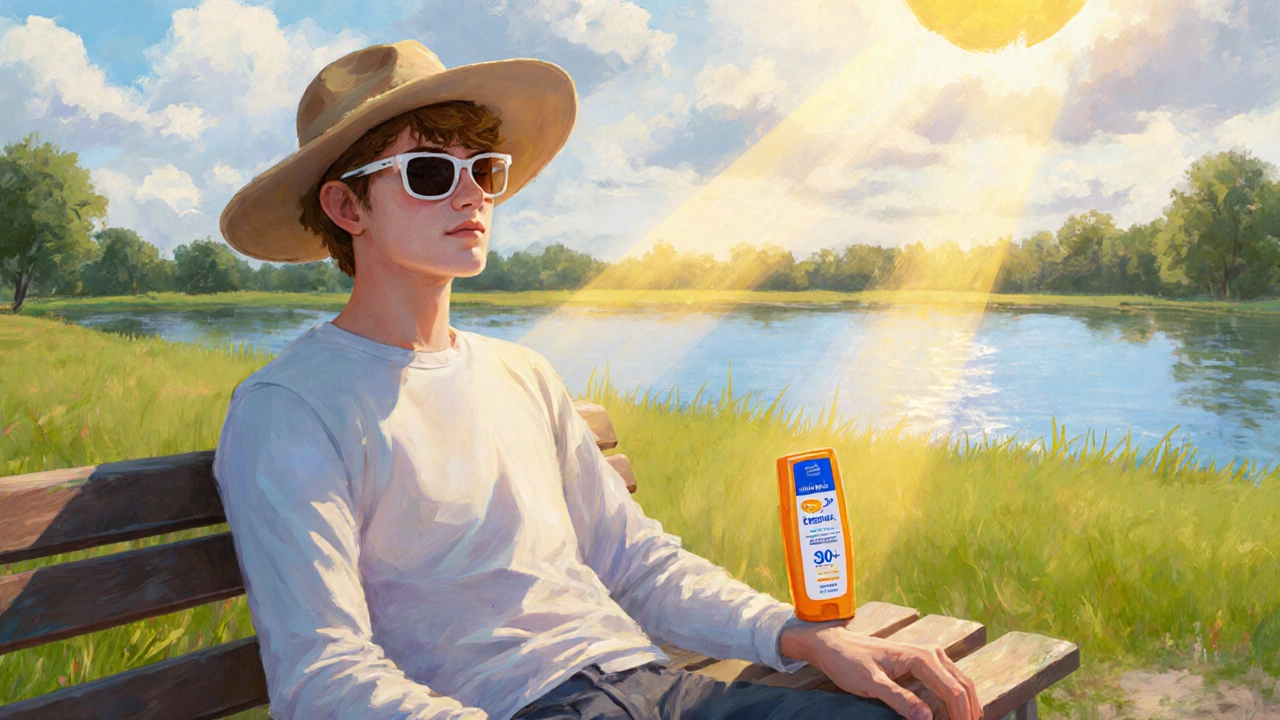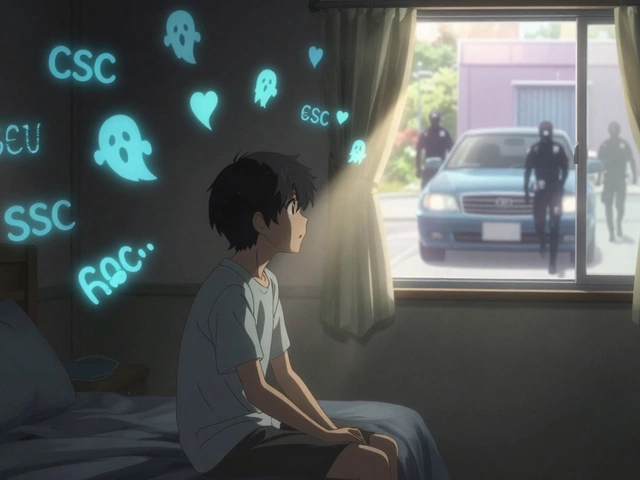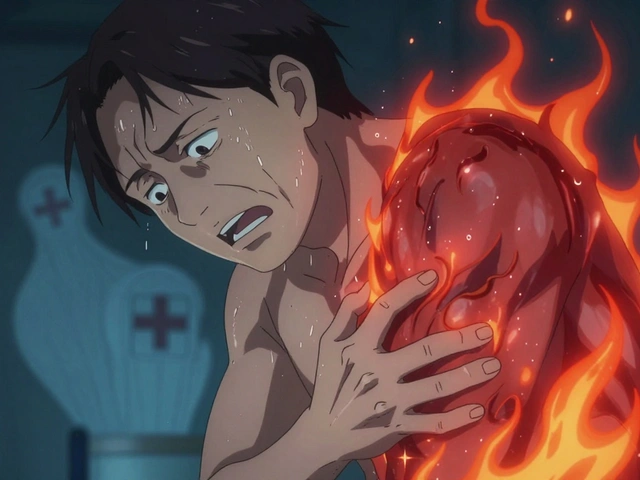Skin Cancer Risk Checker
Assess Your Skin Spot
Use the ABCDE criteria to evaluate pigmented spots. This tool helps you understand if your spot needs professional evaluation. Remember: Early detection saves lives.
Key Takeaways
- Age spots are common, benign signs of sun exposure, while skin cancer is a serious condition that can look similar.
- UV radiation is the main driver behind both, so sun protection is non‑negotiable.
- Changes in size, color, or texture of any spot should prompt a dermatologist visit.
- Early detection of melanoma and other skin cancers dramatically improves outcomes.
- Regular self‑exams, professional skin checks, and sunscreen are the three pillars of prevention.
What Are Age Spots?
When you notice age spots are small, flat, brown patches that appear on sun‑exposed skin, they’re usually harmless. Known medically as solar lentigines, they develop as melanin‑producing cells called melanocytes become overactive after years of ultraviolet (UV) exposure. Most people first see them after age 40, but younger individuals with high sun exposure can develop them too.
Typical locations include the face, hands, shoulders, and forearms. Age spots are uniform in color, well‑defined, and never feel raised or flaky. Because they’re stable in size and texture, they rarely require treatment, though many choose cosmetic options for aesthetic reasons.
Understanding Skin Cancer
Skin cancer covers a group of malignant growths that originate in the skin’s layers. The three most common types are melanoma, basal cell carcinoma (BCC), and squamous cell carcinoma (SCC). While BCC and SCC are usually treatable when caught early, melanoma is the most aggressive and can spread quickly if not removed.
Like age spots, skin cancer is strongly linked to UV radiation, but the cellular damage is far more severe. Cancerous lesions can appear as a new mole, a change in an existing mole, or an ulcer‑like sore that won’t heal.

How UV Radiation Fuels Both Conditions
Both age spots and skin cancer share a common cause: exposure to UV radiation. UV‑A penetrates deep into the dermis, breaking down collagen and prompting melanocytes to produce excess pigment-hence the brown patches. UV‑B is more energetic and directly damages DNA in skin cells, leading to mutations that can become cancerous.
Geography, altitude, and reflective surfaces (snow, water, sand) amplify exposure. In the UK, even cloudy days transmit enough UV‑A to affect skin over time, which explains why age spots are still a concern in Oxford.
Spot the Differences: Age Spots vs Skin Cancer
| Feature | Age Spots (Solar Lentigines) | Melanoma | Basal Cell Carcinoma | Squamous Cell Carcinoma |
|---|---|---|---|---|
| Typical Age of Onset | 40+ | 25‑55 (but any age) | 30‑70 | 30‑80 |
| Common Location | Face, hands, shoulders | Back, legs, arms, face | Face, neck, ears | Face, lips, hands |
| Color | Uniform brown, tan, or black | Varies: black, brown, blue, red, even color‑less | Pearly, pink, or flesh‑colored | Red, scaly, sometimes crusty |
| Texture | Flat, smooth | Often asymmetric, may be raised | Usually raised, may bleed | Rough, crusted, may ulcerate |
| Growth Pattern | Stable, slow growth | Rapid change in size, shape, color | Slow, local growth | May grow faster than BCC |
| Potential to Metastasize | No | High if untreated | Rare | Low‑moderate |
Notice how melanoma’s “ABCDE” warning signs-Asymmetry, Border irregularity, Color variation, Diameter >6mm, Evolution-contrast sharply with the uniform appearance of age spots. When a patch starts itching, bleeding, or changing shape, it’s time for a professional look.
Diagnostic Tools: From Self‑Exam to Biopsy
The first line of defense is a regular self‑exam. Use a full‑length mirror and a hand‑held mirror to inspect hard‑to‑see areas. Follow the ABCDE rules and note any new or evolving lesions.
If something looks suspicious, a dermatologist will likely perform dermatoscopy, a magnified, illuminated view that reveals structure beneath the skin’s surface. Dermatoscopic patterns differ between benign lentigines and malignant melanomas, helping clinicians decide whether a biopsy is warranted.
During a skin biopsy, a tiny piece of tissue is removed and examined under a microscope. Pathology reports confirm cancer type, depth (Breslow thickness for melanoma), and whether margins are clear-crucial data for planning treatment.
Treatment Options: From Creams to Surgery
Age spots rarely need medical treatment, but many opt for cosmetic removal to even out skin tone. Options include topical bleaching agents containing hydroquinone, chemical peels, laser therapy, and cryotherapy. These procedures target melanin without affecting deeper layers.
For skin cancer, treatment depends on type, size, and location:
- Melanoma: Surgical excision with a safety margin is the gold standard. Advanced cases may require immunotherapy (e.g., pembrolizumab) or targeted therapy (BRAF inhibitors).
- Basal cell carcinoma: Mohs micrographic surgery offers the highest cure rate, especially on the face. Alternatives include topical imiquimod, curettage, or radiation.
- Squamous cell carcinoma: Wide local excision is typical; high‑risk tumors may need lymph node assessment and possibly adjuvant radiotherapy.
Early intervention yields cure rates above 95% for BCC and SCC, and over 99% for thin melanomas. Delayed diagnosis dramatically lowers survival odds.

Prevention: Sun Safety Every Day
Because UV exposure fuels both conditions, robust sun protection is the single most effective preventive measure.
- Apply a broad‑spectrum SPF30+ sunscreen every morning, reapplying every two hours outdoors.
- Seek shade between 10am and 4pm, when UV intensity peaks.
- Wear protective clothing: wide‑brimmed hats, UV‑protective shirts, and sunglasses with 100% UV blockage.
- Avoid indoor tanning beds; they emit concentrated UV‑A that accelerates pigment damage.
- Perform monthly self‑exams and schedule annual dermatologist visits, especially if you have a personal or family history of skin cancer.
Even on overcast days, up to 80% of UV‑A reaches the skin, so sunscreen should be a habit, not just a beach‑day ritual.
When to See a Dermatologist
If any of the following occur, book an appointment promptly:
- A new pigmented spot appears after age30.
- Existing spot changes in color, size, or symmetry.
- Spot becomes itchy, painful, or starts bleeding.
- Any lesion develops a crust, ulcer, or doesn't heal within three weeks.
Early referral not only speeds up diagnosis but also opens the door to less invasive treatments.
Checklist: Quick Self‑Exam Guide
- Inspect all exposed skin in a well‑lit room.
- Use a ruler or the width of a pencil eraser to gauge diameter.
- Apply ABCDE criteria to each pigmented lesion.
- Note any spots that feel raised, crusty, or bleed.
- Document changes with photos for comparison over weeks.
Keeping a simple log can make the difference between a routine shave biopsy and a life‑saving early melanoma catch.
Frequently Asked Questions
Can age spots turn into skin cancer?
Age spots themselves are benign and don’t become cancerous. However, the same UV damage that creates them also raises the risk of skin cancer elsewhere on the skin. That’s why protecting all sun‑exposed areas remains essential.
How often should I get a professional skin check?
Most dermatologists recommend an annual full‑body exam for adults. If you have a personal or family history of skin cancer, or many atypical moles, semi‑annual visits are advisable.
Is sunscreen really needed on cloudy days?
Yes. Up to 80% of UV‑A penetrates cloud cover, and it’s the UV‑A that causes age spots and contributes to DNA damage. Apply sunscreen daily, even when it’s grey.
What does a “border irregularity” look like?
A regular border is smooth and even. Irregular borders have jagged, scalloped, or “notched” edges, suggesting uneven growth typical of melanoma.
Are there any home remedies that can safely remove age spots?
Mild over‑the‑counter creams with ingredients like niacinamide, vitaminC, or low‑strength hydroquinone can lighten spots over weeks. For faster or more uniform results, professional laser or chemical peel treatments are recommended.






10 Comments
June Wx
October 13, 2025Sunburn? Nah, that's just the skin yelling for love, and the only love it needs is a good dose of SPF every single morning. I swear the UV rays are like nosy neighbors stealing your glow and leaving brown patches as souvenir. So slather that sunscreen like frosting on a cake, and let your skin shine without the drama.
kristina b
October 15, 2025The distinction between solar lentigines and malignant melanocytic lesions rests upon a cascade of photobiological events that have been meticulously chronicled in the annals of dermatologic literature. Ultraviolet radiation, both UVA and UVB, penetrates the epidermal strata, instigating a complex interplay of DNA damage, oxidative stress, and melanocytic hyperactivity. In the case of benign age spots, the melanin synthesis pathway is up‑regulated yet remains confined, producing uniformly pigmented macules that exhibit a remarkable stability over time. Conversely, malignant transformation entails the accrual of mutagenic lesions within key oncogenes and tumor‑suppressor genes, precipitating an erratic proliferation of atypical melanocytes. The clinical corollary of this molecular divergence manifests as the asymmetry, border irregularity, color variegation, and enlargement that are emblematic of the ABCDE mnemonic.
Furthermore, epidemiological investigations have illuminated a dose‑response relationship between cumulative sun exposure and the incidence of both lentigines and cutaneous malignancies, thereby underscoring the imperative of vigilant photoprotection. Dermatopathological examination reveals that age spots are characterized by a benign increase in melanin deposition without cellular atypia, whereas melanoma displays atypical nests, pagetoid spread, and potential invasion into the dermis. The therapeutic algorithm diverges accordingly; benign lentigines may be addressed with cosmetic modalities such as topical hydroquinone, laser resurfacing, or cryotherapy, while malignant lesions demand excision with histologic margin control, sentinel node assessment, and, when indicated, adjuvant immunotherapy.
In the broader context of public health, the dissemination of knowledge regarding self‑examination techniques and the imperative of routine dermatologic surveillance can dramatically attenuate morbidity and mortality associated with skin cancer. It is incumbent upon clinicians to educate patients about the subtle morphological cues that differentiate a harmless solar lentigo from an ominous melanocytic neoplasm. Ultimately, the convergence of patient awareness, preventive photoprotection, and timely medical intervention forms the triad upon which successful outcomes hinge.
Moreover, the psychosocial impact of visible lesions should not be underestimated, as patients may experience anxiety, altered self‑image, and social withdrawal. Emerging research on topical antioxidants and DNA repair enzymes offers promising adjuncts to conventional sunscreen, potentially mitigating both lentigo formation and oncogenic risk. Clinical guidelines now advocate for a daily SPF30+ regimen, reapplication after swimming or sweating, and the utilization of broad‑spectrum formulations that block both UVA and UVB. In populations with high cumulative exposure, such as outdoor workers and individuals residing at high altitudes, supplemental protective measures including UV‑protective clothing and wide‑brimmed hats become indispensable. As the scientific community continues to unravel the nuanced pathways of photodamage, interdisciplinary collaborations among dermatologists, oncologists, and photobiologists will be pivotal in translating bench discoveries into bedside interventions. The collective commitment to education, prevention, and early detection remains the cornerstone of reducing the global burden of skin cancer.
Ida Sakina
October 17, 2025It is a moral imperative that we prioritize prevention over cure. The ease with which individuals neglect daily sunscreen reflects a broader societal indifference to self‑care. We must hold each other accountable for exposing our skin to avoidable harm. By embracing disciplined photoprotection we demonstrate respect for the sanctity of our bodies.
Amreesh Tyagi
October 18, 2025Everyone loves sunscreen but think about the chemicals we slather on our skin. Natural exposure builds resilience they say yet the data shows DNA damage accumulates. Maybe we’re overreacting to a tiny risk and missing out on vitamin D benefits. I’m not saying ditch protection but question the hype.
Brianna Valido
October 20, 2025Love that you’re thinking about balance 🌞💪! Even a little splash of SPF can keep the skin happy and still let you soak up the good vibes. Keep shining and stay safe, you’ve got this! 😊
Caitlin Downing
October 22, 2025Okay so i get the whole sunscreen thing its super important but i also feel like we get bombarded with doom‑and‑gloom warnings every summer. maybe a chill reminder that reapplying every 2 hours is enough and you dont need to be a walking lab coat. also a little pink tint on a moisturizer works nice for those who hate that white film. just try to find a routine that feels like a treat not a chore.
Robert Jaskowiak
October 24, 2025Oh sure, because slathering on sunscreen is the greatest inconvenience of the century. Who wants to avoid a simple, life‑saving habit when we can all just gamble with skin cancer instead? But hey, if you prefer a future full of dermatologist visits, be my guest.
Julia Gonchar
October 25, 2025Fact: SPF 30 blocks about 97% of UVB rays while SPF 50 blocks roughly 98%; the marginal gain isn’t worth the extra cost for most people. Also, the newer broad‑spectrum formulas cover UVA, which is the real culprit behind age spots. If you apply it correctly, you’ll never need a biopsy for a sun‑induced lesion. Remember, reapplication is key-every two hours or after swimming.
Annie Crumbaugh
October 27, 2025Just a heads‑up, I started checking my skin once a month and it’s actually pretty easy. A quick look in the mirror while brushing teeth does the trick.
Vic Harry
October 29, 2025Stop ignoring the sun, protect yourself.